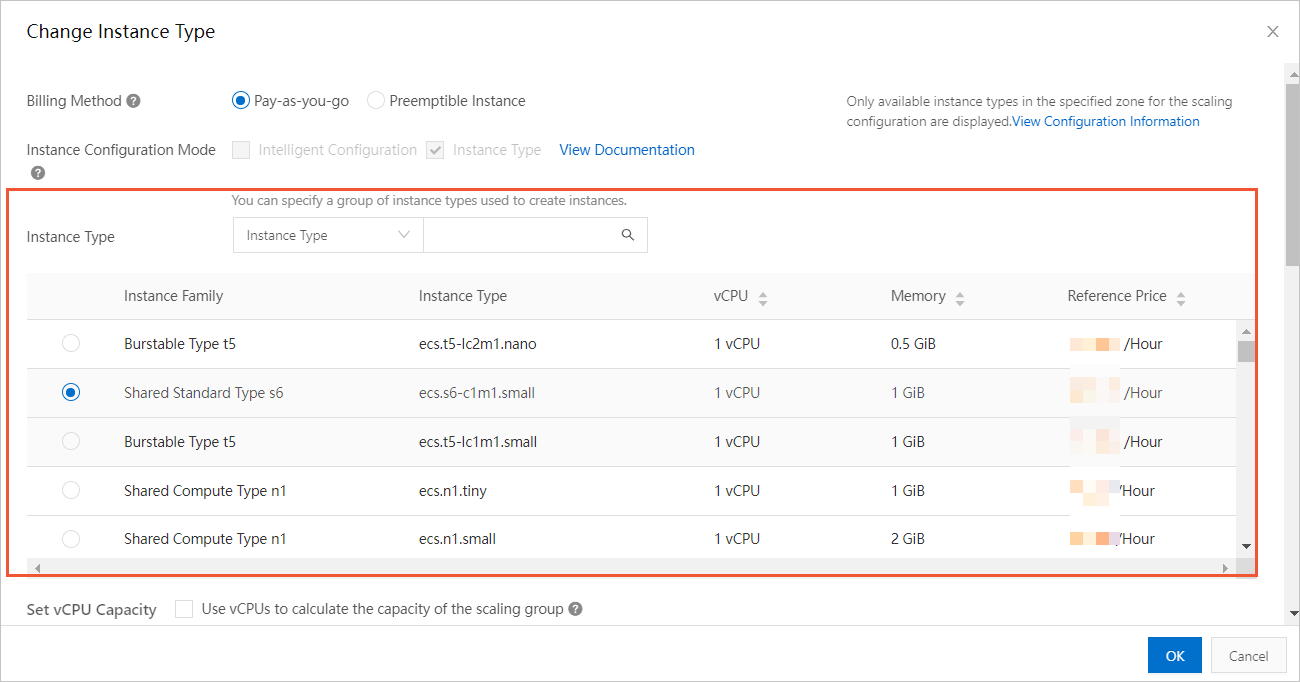To ensure the success of scale-out events, you must make sure that resources are available. Resource availability is determined by resource inventory or constraints between resources. If you want to scale out instances in a scaling group of the Elastic Compute Service (ECS) type, Auto Scaling helps you evaluate the resource availability of the instances based on the scaling strength. This topic describes how to view the scaling strength of a scaling group and improve the scaling strength to ensure a higher success rate of scale-out events.
Background information
Scaling strength
Scaling strength in Auto Scaling specifies the actual number of available resource pools. The larger the number of available resource pools, the greater the scaling strength.
Resource pool
The instance configuration source of a scaling group specifies the template based on which scale-out events are triggered. The template defines the zones and instance types. A combination of a zone and an instance type is considered a resource pool. The number of these combinations determines the number of resource pools.
Available resource pool
Resource pools are not always available. In actual scale-out scenarios, the resource inventory or constraints between resources, such as the g6e instance family supporting only enterprise SSDs (ESSDs), may cause the actual number of available resource pools to be less than the theoretical number of resource pools.
Scaling strength rules
Weak: The scaling group has zero to one available resource pool.
Medium: The scaling group has two to three available resource pools.
Strong: The scaling group has four or more available resource pools.
NoteScaling strength specifies only the number of available resource pools. Improving the scaling strength ensures a higher success rate of scale-out events but does not guarantee a 100% success rate.
Usage notes
The scaling strength feature is supported only by scaling groups of the ECS type.
Scaling strength is determined by the resource inventory and constraints between resources, such as the g6e instance family supporting only ESSDs. To increase the number of resource pools when you configure the instance configuration source, we recommend that you specify a large configuration scope. For information about the constraints of instance types, see Overview of instance families.
Scaling strength may change over time. Scaling strength may decrease due to factors such as zone shutdown, instance type retirement, and change in resource inventory. We recommend that you adjust your configurations based on your business requirements to adapt to the changes in scaling strength.
Procedure
You can perform the following steps to view and adjust the scaling strength:
Log on to the Auto Scaling console.
In the left-side navigation pane, click Scaling Groups.
In the top navigation bar, select a region.
Find the desired scaling group and move your pointer over the scaling strength icon.
The following figure shows that the scaling strength is Medium.

(Optional) To improve the scaling strength from Weak or Medium to a higher level, view and adjust the scaling strength as prompted.
In the panel that appears, click View Scalability Details to obtain the scaling strength status.
In the panel that appears, change the number of zones or instance types to improve the scaling strength.

Change the number of zones:
Click Go to Adjust next to the tips for changing vSwitches.
In the Edit VPC dialog box, change the number of vSwitches and click OK. In the following example, one vSwitch is added.

Change the number of instance types:
Click Go to Adjust next to the tips for changing the instance types in the scaling configuration.
On the Change Instance Type page, change the number of instance types. You can select multiple instance types and click OK.

Verify the result
In this example, the scaling strength of the scaling group changes from Medium to Strong after a vSwitch is added to the scaling group.
